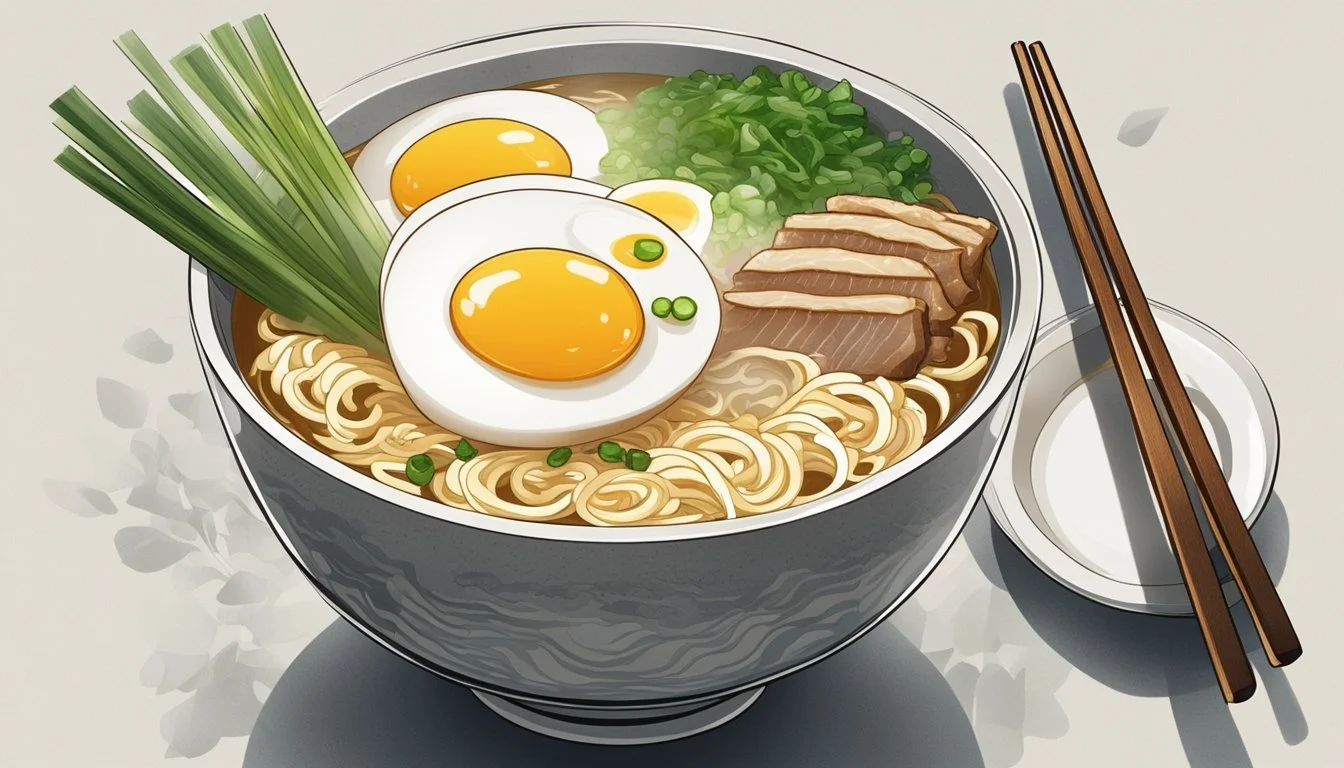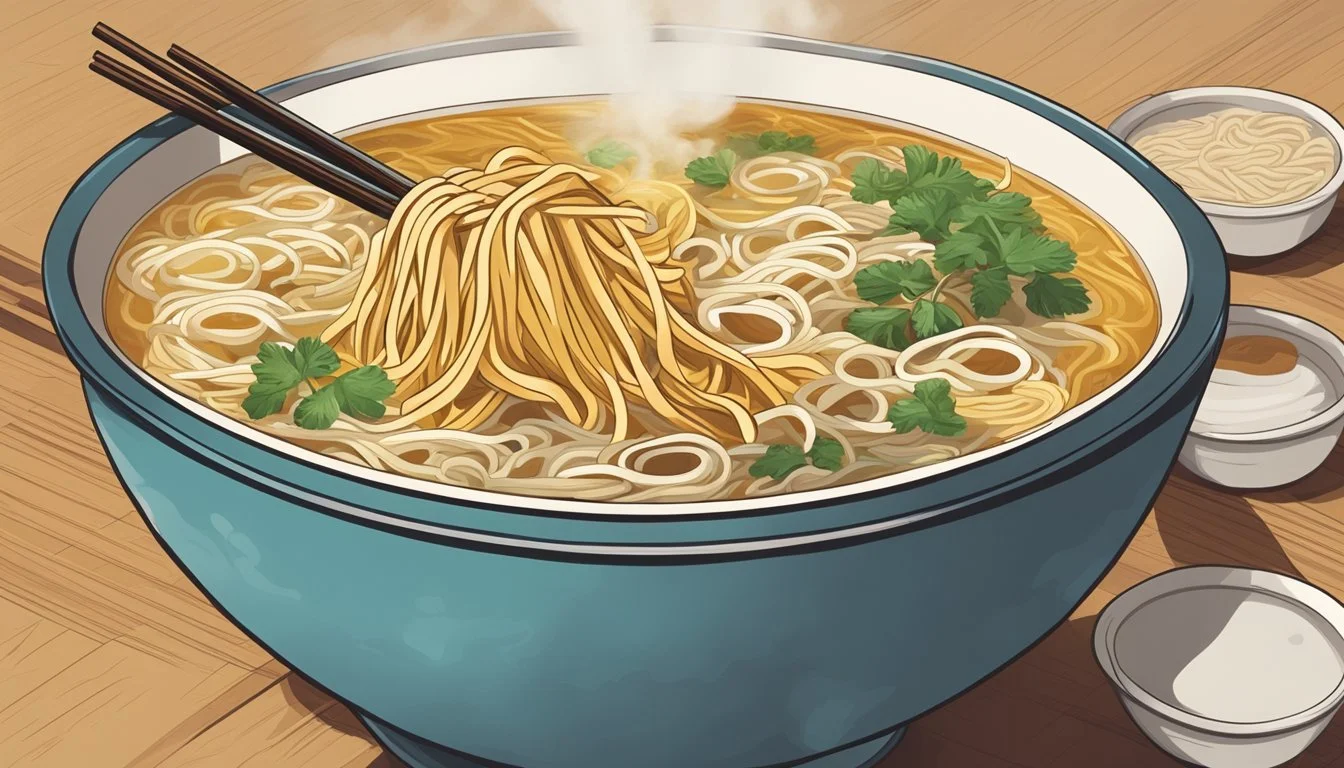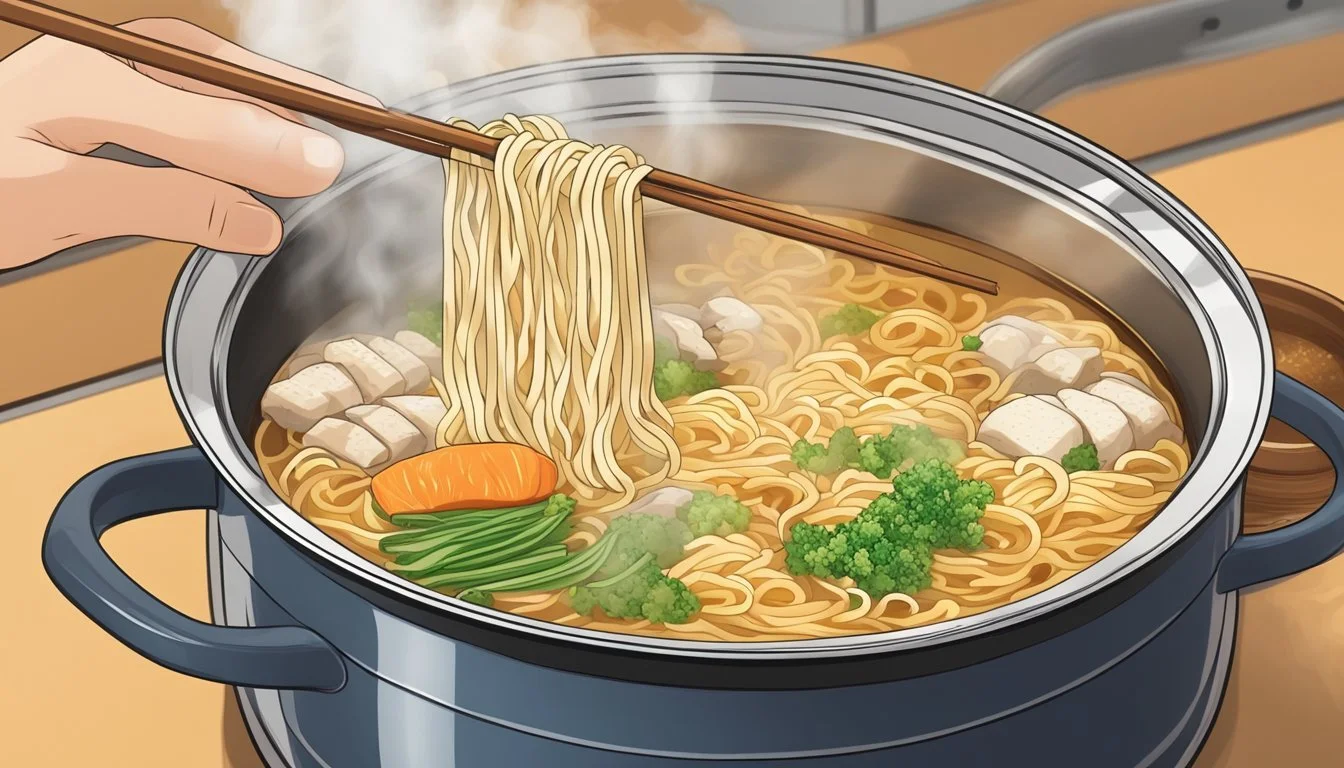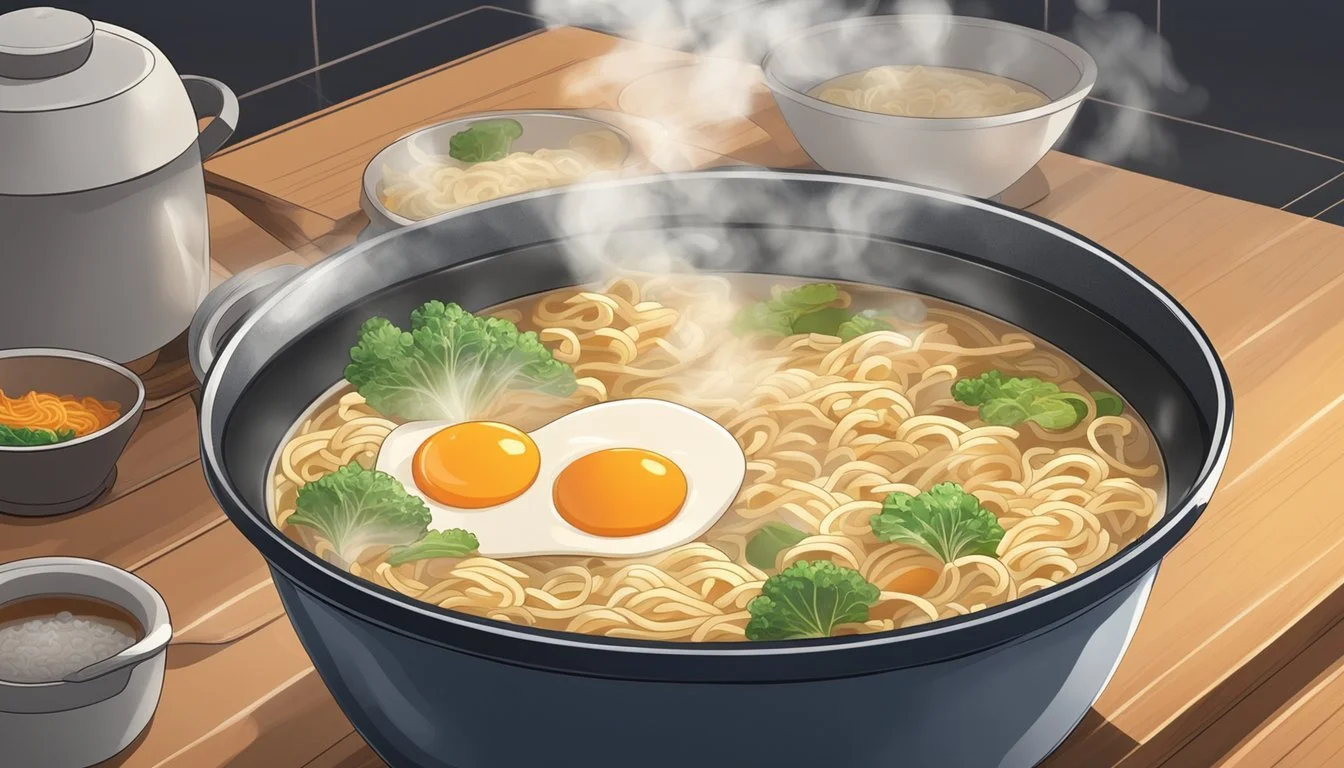Best Way to Reheat Ramen Soup
Ensuring Perfect Noodles Every Time
Reheating ramen soup presents a culinary challenge that many face after enjoying a sumptuous meal of this popular Japanese dish. The delicate balance of flavorful broth and perfectly cooked noodles requires a careful approach to avoid overcooking, which can significantly diminish the quality of the dish. Most individuals are familiar with the disappointment of soggy noodles, which is why understanding the best reheating techniques is crucial for preserving the texture and essence of leftover ramen.
The key to successfully reheating ramen soup lies in handling the two main components separately. Broth should be warmed thoroughly to develop its flavors, while noodles demand a gentle touch to maintain their integrity. As such, it is important to consider the right methods for each part to ensure that the final product resembles the original meal as closely as possible. For enthusiasts of this culinary delight, proper technique can make the difference between a rejuvenated dish and one that falls flat.
This article guides one through the various strategies suitable for reheating ramen soups (What wine goes well with soups?), emphasizing methods that prioritize the texture of noodles and the richness of the broth. By presenting the best tools and techniques, it offers ramen lovers the means to revisit their favorite dish without compromising on taste or quality. Whether utilizing the convenience of a microwave or the controlled heat of a stovetop, there are excellent ways to achieve an enjoyable ramen experience the second time around.
Understanding Ramen Components
Preparing a warm bowl of ramen involves balancing various components for optimal taste and texture. Storing and reheating these components properly ensures the longevity of their freshness and umami-rich flavors.
Ramen
Ramen is a beloved Japanese dish that features a richly seasoned broth, delectable toppings, and noodles. It's a versatile meal where each element plays a symbiotic role in creating the final taste experience.
Broth
The broth is the soul of the dish, typically brimming with umami flavor. Key ingredients can include chicken, pork, fish, or vegetables. Reheating the broth efficiently without boiling preserves its complex flavors and nuances.
Noodles
There are two main types of ramen noodles: fresh noodles and instant noodles. Fresh noodles should be cooked to an al dente texture, while instant noodles require less cooking time. Perfectly reheated noodles maintain their texture without becoming overly soft.
Toppings
Common toppings range from vegetables to pork belly (What wine goes well with pork belly?), seasoned eggs (ramen eggs), and herbs. Their role is to complement the broth and noodles, adding contrasting textures and enhancing the overall flavor profile.
Storing Leftover Ramen
To maintain freshness, store noodles and broth separately in airtight containers in the fridge. This prevents noodles from absorbing excess broth and becoming soggy.
Ramen Eggs
Ramen eggs, known as ajitsuke tamago, are often marinated in a blend of soy sauce, mirin, and other seasonings. When stored properly, these eggs retain their unique savory-sweet profile.
Freshness and Flavor Profile
The freshness of each component significantly affects the ramen's flavor profile upon reheating. Ideally, leftovers should be consumed within a couple of days to ensure a rich and satisfying taste.
Takeout Ramen
Takeout ramen must be deconstructed when storing. Broth should be kept separate from noodles and toppings to preserve the integrity and texture of each component. Reheat each part individually to mimic the experience of a freshly made dish.
Pre-Reheating Preparation
Proper preparation is essential to reheating ramen soup. This ensures each component maintains its texture and flavor without becoming overcooked or soggy.
Separating Ramen Components
Before reheating, separate ramen noodles from the broth and any toppings. This is crucial to avoid overcooking the noodles during reheating. Place noodles, broth, and toppings in different airtight containers if not already stored separately.
Refrigeration Tips
Store leftover ramen in the fridge in airtight containers to maintain freshness. This helps to prevent the noodles from absorbing too much broth and becoming soggy, and keeps toppings like vegetables and bean sprouts crisp.
Assessing Ramen Condition
Check the ramen's components before reheating. If noodles have absorbed too much broth and seem mushy, they might not restore well. Broth should be cloudy but not discolored. Discard any toppings that don't look or smell fresh.
Adding Fresh Ingredients
Revitalize the meal by adding fresh herbs (how long do fresh herbs last?) or vegetables during preparation. Fresh ingredients can enhance the flavor and texture of the ramen upon reheating.
Deciding on a Reheating Method
Choose between the stovetop method and microwave method based on equipment availability and personal preference. For stovetop, gently boil the broth, then add noodles to simmer. For microwave, heat broth separately and then combine with noodles and other components.
Reheating Strategies
Selecting the right reheating method is crucial to ensure your ramen’s noodles avoid becoming soggy and the soup maintains its intended flavor.
Stovetop Reheating Method
To reheat ramen on the stovetop, one should pour the broth into a pot and heat it on medium until it’s hot but not boiling, stirring occasionally. If the ramen includes a separate solid component (noodles, meat, veggies), they should be allowed to reach room temperature before adding to the hot broth.
Microwave Reheating Method
Reheating ramen in the microwave starts with placing the noodles and broth in a microwave-safe bowl. To prevent the noodles from becoming too soft, one can add a small amount of water before heating. Cover the bowl with a microwave-safe lid or wrap to maintain moisture and heat in short intervals, stirring in between.
Oven Reheating Method
Although not conventional for ramen, the oven can be used to reheat the components separately. Place the solid ingredients in an oven-safe dish and cover with foil to reheat at a low temperature. Meanwhile, heat the broth on the stovetop before combining.
Boiling Water Technique
One can also reheat ramen by boiling water in a large pot. Once boiling, turn off the heat and immerse the ramen noodles in the water for about 30 seconds. They should be drained promptly before combining with the warmed broth to prevent them from becoming soggy.
Combination Techniques
A combination approach can be effective, such as heating the broth on the stove and then adding a pat of butter for richness. Meanwhile, separately warm the noodles in the microwave with added water to keep them moist before combining with the hot broth.
Finishing Touches
The final steps of reheating ramen are essential for transforming it back into a bowl of comfort food that rivals its original state. Properly adjusting the soup's seasonings and adding fresh toppings not only rejuvenate the noodles but elevate the entire dish.
Adjusting Seasonings
Once the reheated ramen noodles and broth are ready, the cook must taste the soup and fine-tune the flavor balance. The reheat process can dull spices and other seasonings, so they may add a pinch of salt or a splash of soy sauce to restore the ramen's umami character. A dash of sesame oil or a small amount of miso paste can also be great for adding depth to the broth.
Soy sauce: Add to taste, usually just a few drops.
Sesame oil: A small drizzle can enhance richness.
Miso paste: Incorporate a teaspoon for more complexity.
Adding Fresh Toppings
Ramen is as much about toppings as it is about the noodles and broth. They should add bright, crisp vegetables, thinly sliced pork belly, and fresh herbs just before serving to ensure ultimate freshness and texture. These ingredients don't only contrast the soft and chewy noodles but also contribute fresh flavors and a satisfying crunch.
Vegetables: Green onions, bean sprouts, or bamboo shoots.
Proteins: Sliced pork belly, a soft-boiled egg, or tofu.
Herbs: Cilantro, basil, or mint for a hint of freshness.
Serving and Presentation
They must transfer the ramen to a bowl carefully, ensuring the noodles remain intact. Garnishes play a role not just in flavor but in creating a visually appealing dish. The cook arranges toppings neatly atop the noodles, provides additional condiments on the side, and serves steaming hot, guaranteeing every spoonful is a warm embrace of comfort.
Serving: Use a deep bowl to maintain the soup's temperature.
Presentation: Place toppings with intention for visual appeal.
Avoiding Common Mistakes
Reheating ramen soup requires careful attention to maintain the integrity of each component. Below are specific strategies they can use to avoid overcooking noodles, soggy toppings, and compromised broth quality.
Preventing Overcooking Noodles
One of the trickiest aspects is ensuring the noodles reheat without becoming mushy. Here's what they should keep in mind:
Separate Components: It's critical to separate the noodles from the broth before reheating.
Boil Water Separately: They should heat a pot of water to boiling and submerge the noodles for 30 seconds to a minute, depending on the noodle thickness.
Rinse After: Immediately rinse the noodles under cold water to halt the cooking process and keep them from sticking together.
These steps ensure that the noodles retain their texture, resembling freshly cooked ramen noodles rather than becoming overcooked and undesirable.
Preventing Soggy Toppings
Toppings like vegetables, meats, and eggs play a crucial role in the final dish's texture. They should always be heated separately to avoid sogginess:
Heat Gently: They can simmer toppings gently in the broth or sauté them separately if they prefer firmer textures.
Add Last: Toppings should be placed atop the noodles right before serving to maintain their distinct texture and prevent them from becoming limp.
By managing each topping individually, the toppings return to an ideal warm state without losing their integrity.
Maintaining Broth Quality
The broth is often packed with umami flavor and is the soul of any ramen dish. They must reheat the broth in a way that maintains its quality:
Avoid Boiling: They should heat the broth until it's hot but avoid boiling it, as aggressive heating can alter its delicate flavors.
Microwave with Care: If using a microwave, they should heat the broth in short intervals and stir in between to distribute the heat evenly without overdoing it.
Adhering to these principles helps preserve the broth's depth of flavor, ensuring it closely resembles the original taste.
Advanced Tips
In seeking the pinnacle of ramen enjoyment, enthusiasts delve deeper into the techniques that enhance flavor, maintain texture, and preserve the dish's integrity. Here, you'll uncover methods to elevate instant ramen, master the art of freezing and reheating, and utilize leftover ingredients effectively.
Enhancing Instant Ramen
Instant ramen, a familiar comfort food, can be transformed into a gourmet experience with a few tweaks. Adding umami flavor enhances the broth; consider stirring in a spoonful of miso paste, a dash of soy sauce, or a sprinkle of dried seaweed. For a heartier meal, top with slices of pork belly or sautéed vegetables to introduce a freshness that contrasts the convenience of instant noodles.
Freezing and Reheating Ramen
Freezing ramen is a game-changer for preserving its flavors. For best results, one should freeze the broth and toppings separately in airtight containers. When ready to enjoy, reheat the broth until hot, then briefly submerge the noodles in boiling water—just enough to heat through, but not so long as to overcook. This honours the texture and freshness of the original dish.
Utilizing Leftover Ingredients
Leftovers should not be overlooked; they're an opportunity to minimize waste and maximize flavor. Repurpose leftover vegetables by integrating them into the ramen as fresh toppings. Proteins such as leftover pork belly can be sliced and gently reheated in the broth, infusing it with rich, savory notes. One must ensure that all ingredients are heated to the appropriate temperature to guarantee both safety and taste.
Conclusion
When looking to reheat ramen soup, one must handle both noodles and broth with care to avoid a disappointing plate of overcooked or separated flavors. Properly stored ramen – with noodles and broth in separate containers – sets the stage for a successful reheating.
For Noodles:
Fresh or leftover noodles are best rejuvenated by a quick 30-second to one-minute plunge in boiling water.
Immediately rinse them under cold water to cease the cooking process, ensuring they retain a firm texture.
For Broth:
Broth demands gentle warming, either in a pot over the stove until just hot enough, or in a microwave using short intervals.
A reheating process that divides noodles and broth respects the integrity of ramen's distinct elements. Noodles remain springy, not dull or mushy, and broth's flavor deepens rather than diminishes.
Finally, the combination of warmed broth and noodles should be swift – reuniting them only long enough to achieve a uniform temperature. This method promises a bowl of ramen reminiscent of its freshly made glory.
Frequently Asked Questions
In this section, one will find the key methods to reheat ramen when a microwave isn't available and the proper way to store and reheat ramen with eggs to maintain the quality and taste.
Reheating Ramen Without a Microwave
For individuals who prefer not to use a microwave or do not have one available, reheating ramen on the stovetop is an excellent option. It is important to separate the broth from the noodles before reheating. One should place the broth in a pot and heat it until it is hot, but not boiling, to avoid overcooking. The noodles can then be added to the broth for the final minute of heating to ensure they are warm yet retain their texture.
Storing and Reheating Ramen with Eggs
Storing ramen leftovers with eggs requires a bit more attention. One should store the ramen eggs in an airtight container separately from the broth to retain their delicate texture. The broth should be reheated on the stove until simmering. After that, one can gently add the eggs to the broth, allowing them to warm through without overcooking. This method ensures that the leftovers, stored properly in the fridge, are reheated to just the right temperature, keeping the essence of the ramen experience intact.
Additional Resources
For enthusiasts wanting to enhance their ramen reheating techniques, an array of resources is available to delve into the nuances of perfecting ramen soup at home. These resources range from online tutorials to cookbooks dedicated to the art of ramen.
Online Forums and Communities:
Ramen aficionados often share their experiences and advice on forums such as Reddit's r/ramen. This is an excellent place for tips on reheating and customizing homemade ramen.
Food Blogs:
They often feature step-by-step guides and can be valuable for home cooks. Key examples include The Fork Bite and Pantry & Larder, which offer practical advice on reheating ramen.
Cookbooks:
Several cookbooks provide in-depth guidance on all things ramen, including how to properly reheat and serve:
Ivan Ramen by Ivan Orkin
Simply Ramen by Amy Kimoto-Kahn
Japanese Cooking: A Simple Art by Shizuo Tsuji
Each book offers unique insights into the preparation and enjoyment of homemade ramen.
YouTube Channels:
Visual learners may benefit from watching expert chefs on YouTube. Channels like Cooking with Dog or Ramen Adventures give a comprehensive look into preparing and reheating ramen.
Cooking Classes:
For a more hands-on approach, some may find local cooking classes that cover the specifics of making and reheating ramen. This provides an opportunity to ask questions and get immediate feedback from experienced instructors.






